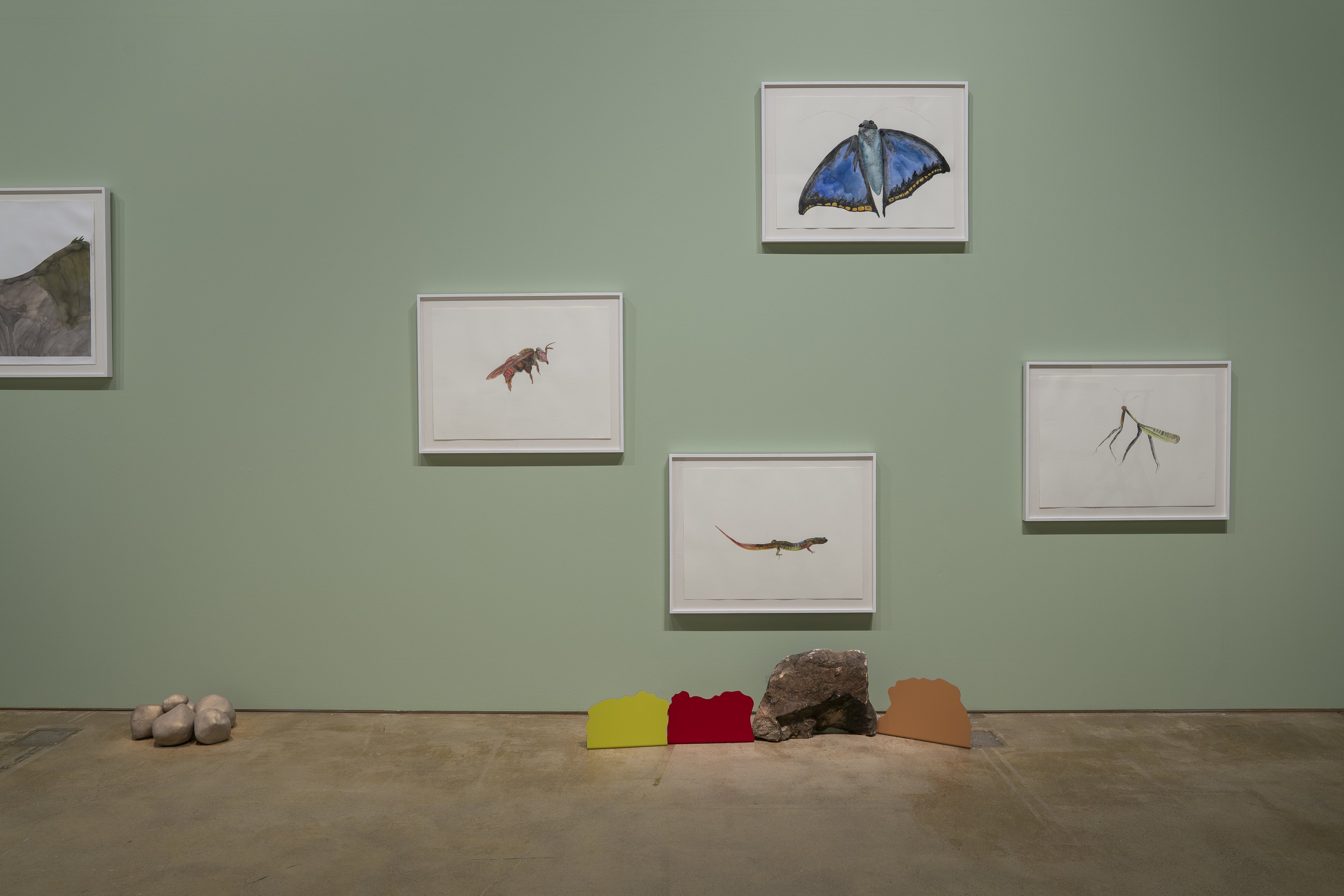Maria Thereza Alves’ (b. 1961) practice is centred on the critical examination of specific geographical territories and the foregrounding of silenced histories.
Her projects unfold in dialogue with the physical and social contexts in which she lives or visits. Alves has taken up themes such as the devastating effects of Portuguese imperialism on the Indigenous peoples of her native Brazil and the impacts of the Spanish conquest of the Americas.
Her artistic practice is thematically informed by her work as a founding member of the São Paulo Green Party and as a former member of the International Indian Treaty Council, which serves as an advocate of Indigenous rights, self-determination and environmental protection.
Photo: Francesca Fattori

Maria Thereza Alves: Council of Being series, 2022-2023, detail. Helsinki Biennial 8.6.–21.9.2025, HAM Helsinki Art Museum. Courtesy of Martins & Montero, Sao Paolo, Brusses. Photo: HAM / Helsinki Biennial / Sonja Hyytiäinen
Hill Being / Seres Morros & The Council of Beings, 2021–2023
Artwork location: HAM Helsinki Art Museum
The Hill Being / Seres Morros series depicts the hilly terrain of the São Paulo region, which has been irreversibly impacted by humans.
In The Council of Beings, Alves subverts human-centric political practices by proposing new ways of involving other-than-humans in the democratic process. It is a founding principle of democracy that all those affected by political decisions must be involved as active agents in the process of social decision-making. Policies formed by national or state governments invariably affect many species of organisms, but other-than-humans are denied a voice in human-made decisions affecting them.
It thus stands to reason that true democracy cannot be achieved unless the needs of non-human cohabitors of the Earth are duly honoured in social decision-making.
The Council of Beings concerns a specific community in São Paulo. The watercolour paintings depict stones, grass, terrestrial crustaceans, insects, amphibians and reptiles either local to São Paulo or refuge-seeking species fundamental to this thriving more-than-human community. Alves has installed sculptural elements as shelters or refuges inviting visitors to contemplate the possibility of coexistence as part of a more inclusive, reciprocal community.